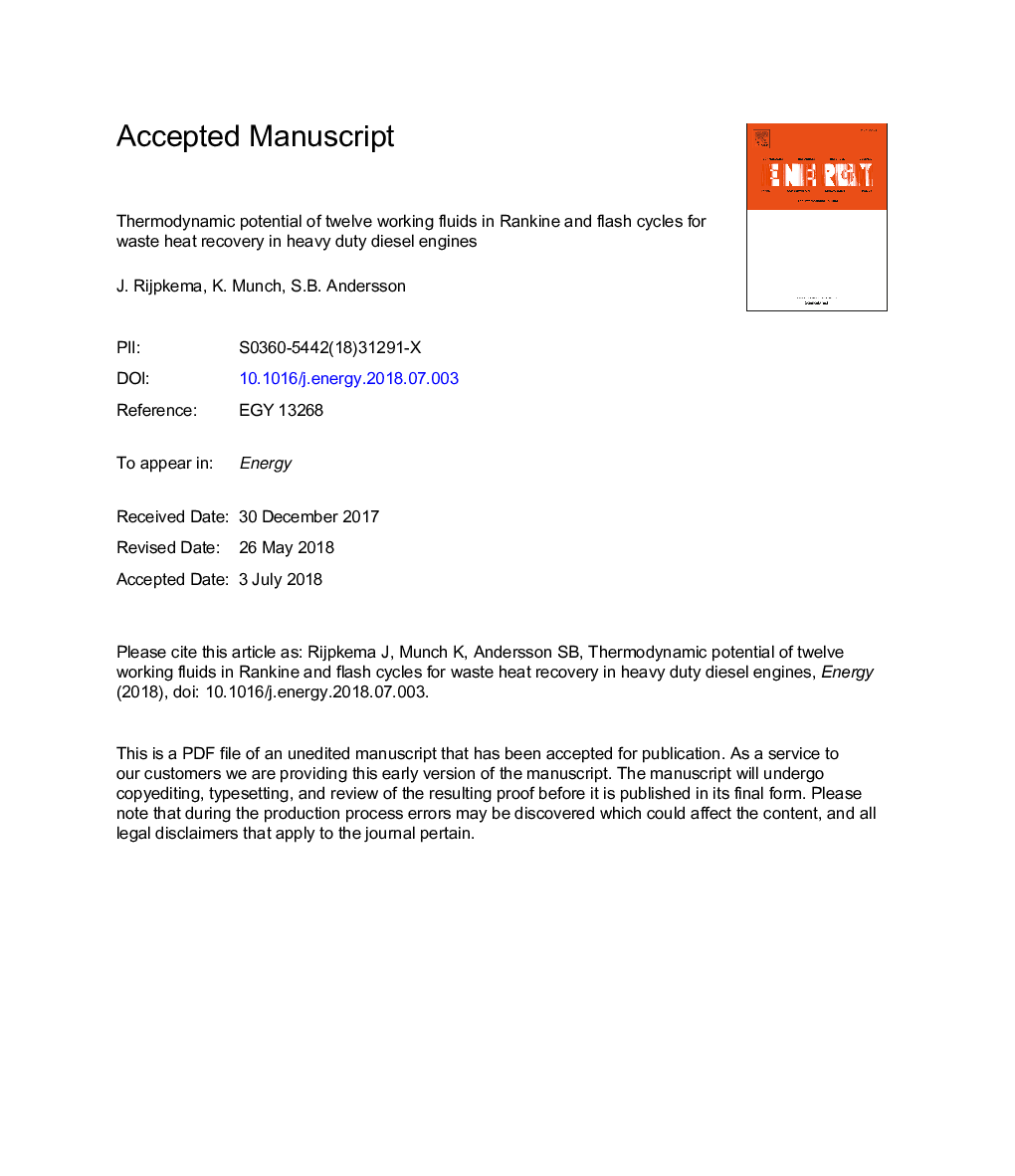| Article ID | Journal | Published Year | Pages | File Type |
|---|---|---|---|---|
| 8071032 | Energy | 2018 | 15 Pages |
Abstract
A promising method to improve the efficiency of internal combustion engines is the use of thermodynamic cycles for waste heat recovery (WHR). In this study twelve working fluids are evaluated with regards to their thermodynamic potential for four cycles: the Rankine cycle (RC), the transcritical Rankine cycle (TRC), the trilateral flash cycle (TFC) and the single flash cycle (SFC). An energy and exergy analysis of a heavy duty Diesel engine revealed four sources with potential for WHR: the charge air cooler (CAC), the engine coolant, the exhaust gas recirculation cooler (EGRC) and the exhaust gas. Simulations performed for one engine operating mode, showed that the TFC performed best for the CAC with a power output of 2â¯kW. Owing to the thermal match between source and cycle, the RC outperformed all other cycles for the coolant with a power output of 5â¯kW. For the EGRC, the TRC with methanol gave the best output of 8â¯kW. As for the exhaust, all cycles had an output of around 6â¯kW with much variation between the fluids. A sensitivity analysis of the condensation temperature, source outlet temperature, degree of superheating, operating mode and expander efficiency showed significant impact on the output.
Keywords
Related Topics
Physical Sciences and Engineering
Energy
Energy (General)
Authors
J. Rijpkema, K. Munch, S.B. Andersson,
